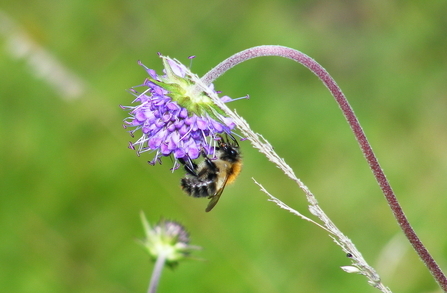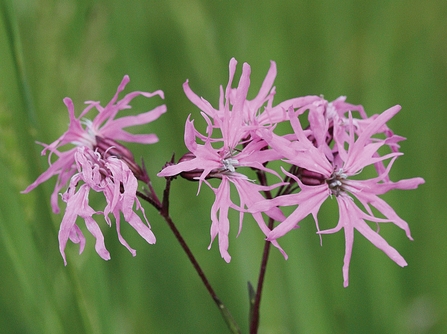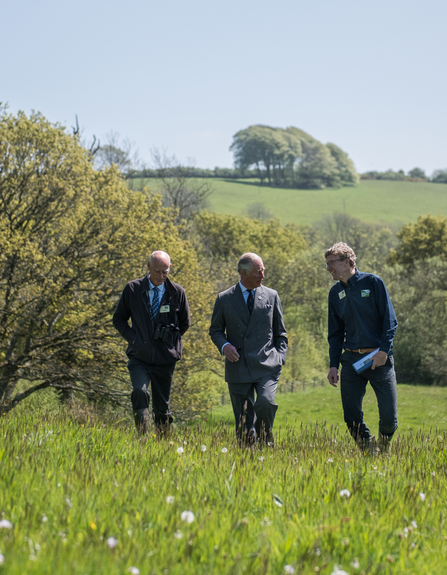The wildflower restoration project aimed to identify flower-rich meadows in the UK and to harvest wildflower seeds from them to restore 60 new meadows to secure the UK's wildflower heritage for the next 60 years. Lady's Mead Meadow at Kingcombe Meadows, (now part of the Kingcombe National Nature Reserve) was chosen to showcase Dorset's meadows and to donate its seed to other wildflower meadow restoration projects.
One of a set of meadows at Kingcombe, Lady's Mead was given its name when it was split from an adjoining field known as 'Lord’s Mead'. Kingcombe Meadows is still managed as a working farm using traditional methods, grazed by cows and sheep and without artificial fertilisers, herbicides or pesticides. Lady's Mead is particularly impressive in spring and early summer for the blaze of colour and sustains many common wild flowers including devil's-bit scabious and knapweed. Butterflies include varieties of skipper and fritillary and birds abound, with visiting summer warblers, as well as dippers and grey wagtails. It is particularly impressive in spring and early summer for the blaze of colour.




